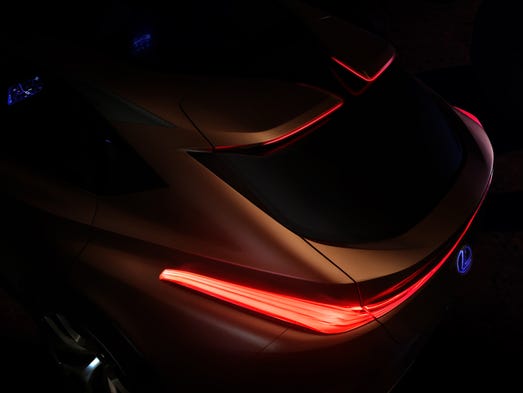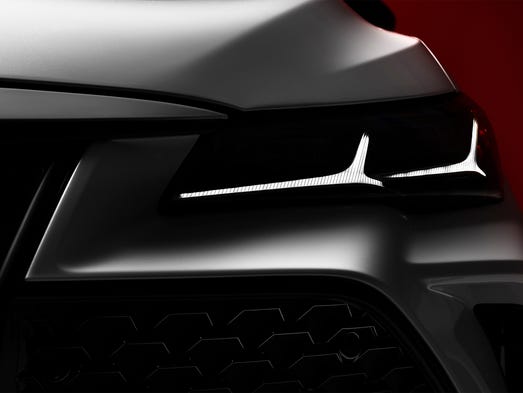The digital revolution is changing the Detroit auto show, too.
Once the global auto industry’s unchallenged blockbuster for the new calendar year, the Detroit show faces challenges on multiple fronts: The auto-relevant CES technology show happening now in Las Vegas is siphoning away news makers. Social media is muddling messaging. And restless manufacturers are looking for more exclusive venues.
Even Martin Luther King Day isn’t helping because the timing of this year’s show calendar is turning that traditionally heavy public traffic day into a press day. But reports of the death of the auto show are greatly exaggerated. Count on the 2018 Detroit-a-palooza to make plenty of noise again.
In 1989, organizers of the event rebranded it as the North American International Auto Show and broadened its global appeal to become a premier stop for foreign automakers and their domestic rivals. At the turn of the 21st century, the show attracted some 5,000 members of the international news media to witness the introduction of what frequently included more than two dozen new production vehicles and nearly three dozen concept cars.
This year, despite healthy U.S. sales and media attendance, new production reveals will shrink to around 20 and a handful of concepts. The reasons are many, including an accelerating product cadence that has distributed show reveals to other events in the calendar year, like the Los Angeles and New York shows.
Some automakers like Jaguar are avoiding the Detroit show altogether. Sure, the elegant Brit-brand debuted its latest, compact E-Pace SUV in Detroit last year — it just decided to show it alone. In Novi. In September.
The event was part of an international premiere of the Jaguar cub that included a 360-degree barrel-roll in London. Using the internet and social media, the E-Pace owned the news cycle with its singular introduction, away from the noise of an auto show.
Jaguar’s events mirror a trend that includes global reveals like Ford Mustang’s six-city intro in 2013 and the Chevy Corvette introduction in Dubai in November. Says John McElroy, host of Autoline and a long-time industry watcher: “It’s all about presenting your own message and getting as much media as possible.”
But the biggest competitor to the auto show is CES.
The sprawling, January exhibition in Las Vegas has been an industry gathering place for all things electronic since 1978. The two spectacles — one a trade show, the other a public auto show — shared little other than female product-models until this decade.
But as digitally savvy consumers demand more of their cars than legroom and horsepower, manufacturers have introduced more electronics. And they made more of those introductions at CES.
Ford Motor Co. launched its MyTouch connectivity suite at CES in 2010. And this year automakers are introducing not just new car features — like Mercedes-Benz’s MBUX infotainment system and Ram’s Sirius satellite-radio feature — but all-new cars. Hyundai debuted its hydrogen-powered NEXO SUV, and Kia unveiled its electric concept, the Niro EV.
CES also poaches important auto executive speeches once exclusive to the Detroit show. During CEO Alan Mulally’s tenure at Ford, the Blue Oval used CES to tout its technology cred. General Motors Co. CEO Mary Barra keynoted the 2016 CES on “Redefining Personal Mobility.” And this year new Ford CEO Jim Hackett gave a much-anticipated speech.
“CES is the 800-pound gorilla for Detroit,” says McElroy. “The industry has changed so much in recent years. Auto shows are still part of the marketing, but with the Internet, carmakers can track their ROI (return on investment) digitally so everything has gotten much more granular.”
In short the Detroit show is in a battle with CES for media coverage. Once divided into tidy camps of car and technology geeks, the two shows now share media outlets. It’s a unique situation for Detroit compared to other international auto shows like those in Frankfurt and Tokyo.
But the North American International Auto Show hasn’t stood still.
“I like competition,” says Executive Director Rod Alberts, who has run the show for 24 years. “But I look at it as a competition with ourselves to grow and target more audiences. CES is a great show, but by definition they have to be a blend because electronics cover so many markets.”
“We’re a purist show,” he continues. “We’re concentrated on autos and all that they do.”
He dismisses the idea that AutoMobili-D — an addition featuring the latest in connected and autonomous car technology which debuted last year — was a response to CES.
“It would have happened anyway,” he says, tracing the Detroit technology conference’s roots to 2009 when NAIAS offered public rides in new electric vehicles. “AutoMobili-D goes back to our creating a show energy and getting into technologies and other aspects that are changing the industry.”
He even shrugs at any concerns about Martin Luther King Day falling in the middle of press days this year because CES scheduling pushed NAIAS back to the third Monday of the month. Historically, the work holiday has boosted show crowds.
“MLK Day will be back in public days again in 2019,” says Alberts.
IHS Senior Auto Analyst Stephanie Brinley says the challenges to the Detroit Show are obvious, but she says the competition brings out its enduring strengths.
“CES and Detroit are fundamentally different shows,” says Brinley, who will attend both this year. “Because CES is a trade show, it’s a great way for manufacturers and suppliers to show off what they have in store. But if you have a vehicle that’s coming to market in the next six months, then an auto show is where you need to be.”
Brinley says that while the internet has allowed more flexibility in introducing cars, the idea of independent auto reveals has been overblown. “Off-site programs are really expensive to do. Shows are still very relevant to media — and they matter to consumers who want to come in and kick the tires.”
Autoline’s McElroy says CES has executed “a neat chess move” in garnering a week of auto attention before Detroit, but believes Alberts and his crew are resilient.
“This is going to be a big show,” McElroy says. “You’re going to see mega-launches of everything from pickup trucks to a Lamborghini SUV.”
Henry Payne is auto critic for The Detroit News. Find him at hpayne@detroitnews.com or Twitter @HenryEPayne. Catch “Car Radio with Henry Payne” from noon-1 p.m. Saturdays on 910 AM Superstation.
Detroit auto show
The North American International Show is coming, with media days Jan. 14-16 and public days Jan. 20-28. Here are the events open to the public.
The Gallery of luxury cars, 6:30-11 p.m. Saturday. Tickets: $250.
Charity Preview, 6-9 p.m. Jan. 19. Tickets: $400.
Public show, 9 a.m. to 10 p.m. Jan. 20-27; 9 a.m. to 7 p.m. Jan. 28. Tickets: $14; $7 ages 7-12 and 65+.
Tickets and information: naias.com





































































